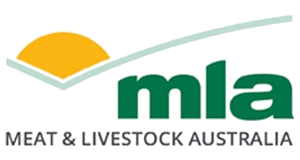Summary
The project undertook analyses to identify the impact on the performance of the beef business of changing breeder herd management practices. Reproduction efficiency was defined as the number of weaners produced divided by the total number of breeders mated expressed as an annual percentage. A wide range of data sources were applied in the analyses.
The objectives of this project were to:
• Identify the costs, benefits and risks to selected properties, within a range of regions/production environments, of management practices aimed at improving breeder herd economic performance
• Improve the capacity to estimate the benefits of investing in management practices aimed at improving reproduction performance.
• Explore how the nature of the relationship between gross economic response and reproductive rate varies for different regions and production systems
• Quantify the level of economic impact arising from variation in breeder herd performance of comparable properties
A key question of “what are the costs of out-of-season calving?” was also addressed.
Seasonal and market conditions encountered by beef producers in northern Australia in the recent past have been difficult for many operators. These difficult conditions have focussed the attention of people throughout the industry on strategies to maintain and lift profit. Evidence from the research conducted in this project about improving the efficiency of reproduction or changing the management of beef herds supports the following conclusions:
• There are well-established strategies that have the potential to improve the economic performance of breeding herds that currently achieve low levels of performance. The uniqueness of systems and their management, and the many inputs that combine in beef production systems to create ultimate output, along with the relationships between these inputs, means there is never any simple relationship between any single input such as reproduction performance and the quantity and value of output, measured ultimately as whole business profit. Thus the efficacy of strategies to lift economic performance of the whole business depends on the situation, nature and characteristics of each production system and its management, and the opportunities and constraints of each beef business.
• Adopting and implementing strategies to change production systems by improving breeder herd and economic performance, such as feeding supplements, managing weaning, controlling mating, segregating herds and other herd management strategies, warrant detailed consideration and whole of business analysis. Intensification or extensification can be profitable, depending on the circumstances of the business.
• When poor reproduction efficiency is a problem, it is usually necessary to use data on cow performance to select and maintain the breeding herd. Such strategies demand a level of management skill and an emphasis on timeliness of operations, often greater than has hitherto been the case in the systems that are delivering the poorest levels of reproduction performance.
• Managers who are skilled to collect, assemble and analyse relevant data about the breeders in the herd and are able to manage the breeding herd for higher performance, are also generally capable of gathering and analysing information to identify and implement strategies that suit their particular herd and system, considering the resources they have to work with, and the constraints they confront, to improve the profit of the business they run.
Any individual beef breeding herd that improves its reproductive efficiency from one level to a higher one is likely to see herd nutrition, mortality rates, growth rates, stocking rates; culling strategies and age of turnoff all significantly change. However, factors preventing managers changing current management systems to improve performance are specific to the people, the systems and the natural and financial resources available. Enterprise gross margins tend to increase at a decreasing rate as reproductive efficiency improves. If the extra benefit of improving reproductive efficiency from its current level to a higher level is contemplated, then the marginal benefit of shifting reproductive efficiency needs to be calculated at each level of reproductive efficiency for each property. It is of little benefit to generalize strategies, or assume that current systems are not achieving targets without taking into account the complexity of each production system; its management, the risks, constraints and opportunities.
The key to investing to improve the performance of beef businesses is for managers to understand the trade-offs and responses to change likely to occur in the system they manage, and being able to estimate how much a change is likely to improve profit and affect the risks. The key to improving the performance of low-profit beef herds in northern Australia is to use the skills and knowledge of management, combined with capital investment in infrastructure, and to increase quantity, quality and timing of nutrition available to the herd to achieve profitable strategies that improve reproduction performance. Such outcomes are achievable when beef producers focus on all potential profit-making opportunities of the business, identifying constraints and risks. The focus is on whole of business profit and not on partial technical indicators of performance.
The ultimate decision criteria to judge a potential change to a beef production system; particularly for reproductive efficiencies, is the return on extra capital invested that is likely to result, weighed up in the context of the extra business and financial risk associated with that change.


